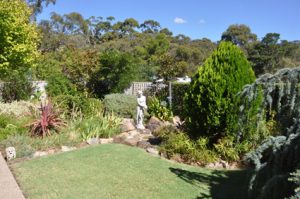Entertaining friends – a creative act of love
For the past 16 years, I have kept a Hostess Book which capture the many dinner parties and celebrations held in my various homes, both as a divorcee, a married woman and, finally, as a widow.
When I was married to my lovely Frenchman, Olivier, dinner parties were grand occasions and the order of les rapas (the meals) was strictly French. As he once said, “entertaining in the French manner is not easy because I have the whole food culture to uphold“.
Since his death, almost six years ago, I have held few dinner parties and my entertainment became the other French lifestyle – holding aperitifs – where friends were invited over at around 5-6pm for drinks and hors d’oeuvres.
However, after an 18 month hiatus, this week I have dusted off my myriad French cookbooks, chosen recipes, shopped for ingredients, then donned my apron once more and cooked la nourriture.
That’s a great start to French entertainment. But, almost as important as le gout (taste) of the food, is the setting or l’art de la table. This is the truly pleasurable, creative side of receiving guests for a meal. My floral arrangement is my own creation, using agapanthus and other flowers.
My piece de resistance isn’t French, though. It’s the German Villeroy & Boch porcelain inner set entitled “Country garden”. When I found matching napkins in the V & B retail outlet at Burnside Shopping Centre in South Australia, I was ecstatic. What a good reason to invite a few friends around for inner, I thought.
Finally, last night, my five guests (after sparking French white wine in the garden) sat down to eat at my dressed dining table. Everyone made a contribution – women providing a vegetable dish and dessert, the men bringing bottles of wine and soft drink.
As a widow, I have swapped from using French recipes all the time to a mix of cuisines. My home-made dip, the Middle-Eastern Baba Ganoush, was as simple to prepare as a cereal breakfast.
Cut an eggplant in half, bake in the oven, peel and squeeze out moisture; place pulp in vitamiser and add tahini paste, salt and pepper and dash of lemon juice.
I laugh as I recall how Olivier would never let me cook steak because he liked it “blue”. He would love to add “Blue means red blood on the plate”. Ugggh.
But, he did convert me to medium rare steak, which is how I cooked the rib eye steak, a few minutes on either side until it was pink and blood moist inside. Two guests wanted medium-well-done, so this required a long 10 minutes of cooking. (I don’t know how they eat it now, which shows how my taste has evolved.) Two onions, sliced and cooked until soft beforehand were added to the red wine gravy, based on the marinade which I used on the meat overnight.
Accompaniments were fried zucchini and celery, while a large dish of potato gratin – my sister’s contribution – was finished off in the oven. Accompaniments included cabernet jelly – and Dijon mustard, of course.
To accompany such a magnificent meal (I say so and so do my guests) we consumed two labels from Coonawarra – Brand’s Laira Cabernet Sauvignon 2014 and its Dry Red, 2013 and Bent Wind, 2015 from Coonawarra. These were all delicious, rich fruity wines.
Dessert came courtesy of one of the winners of My Kitchen Rules, posted on its website. White chocolate cheesecake with berry coulos and ice cream. My friend made her own shortcrust pastry and it was a delightful third course.
However, with so much love spent creating the eye-popping dessert, I swapped the cheese platter to last – forbidden by my husband, who insisted cheese came after the main course and was served with green salad.
Cheese platters these days reflect a modest income, although I always choose D’Affinoir, the creamy French camemr=bert as well as a Dutch edam and a bitey Australian cheddar.





